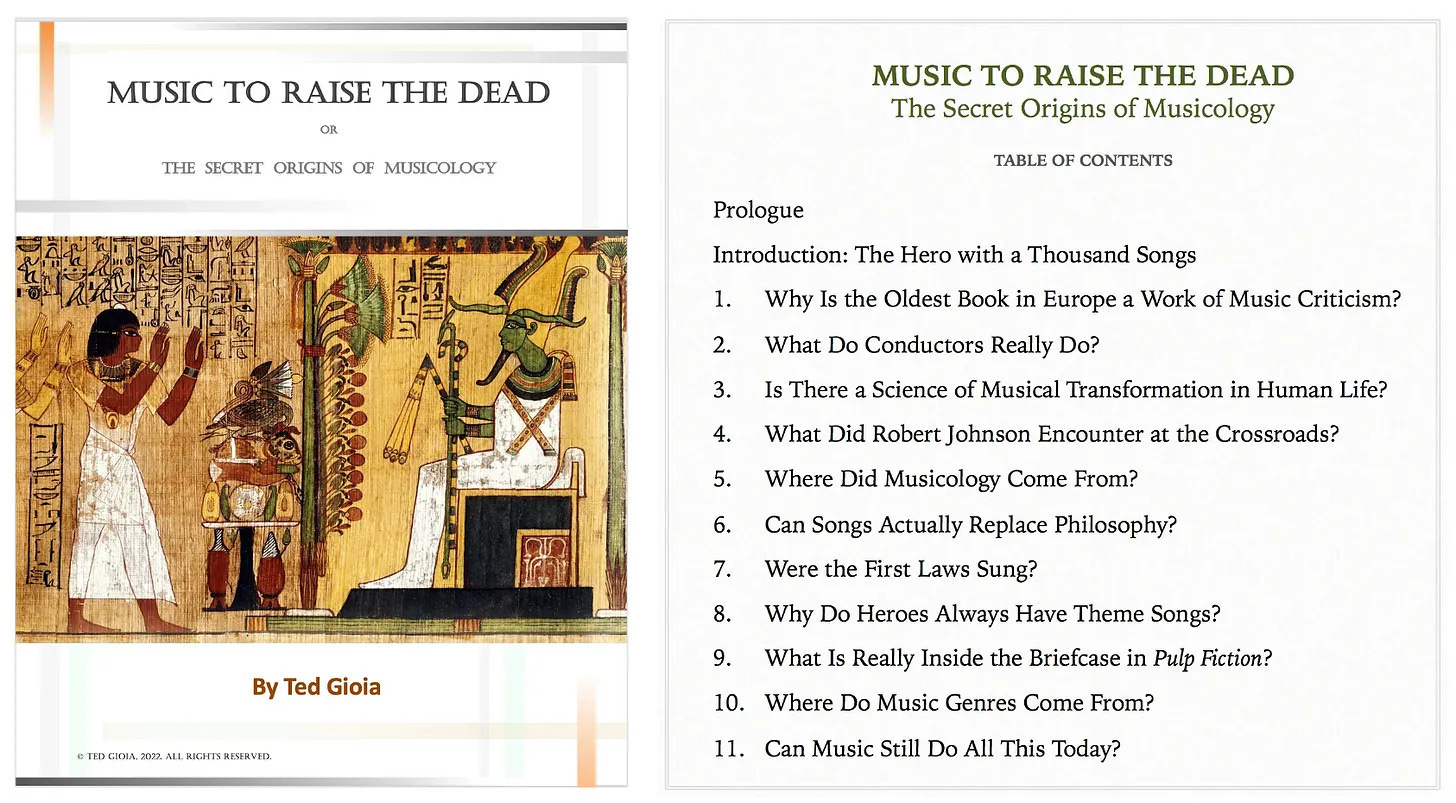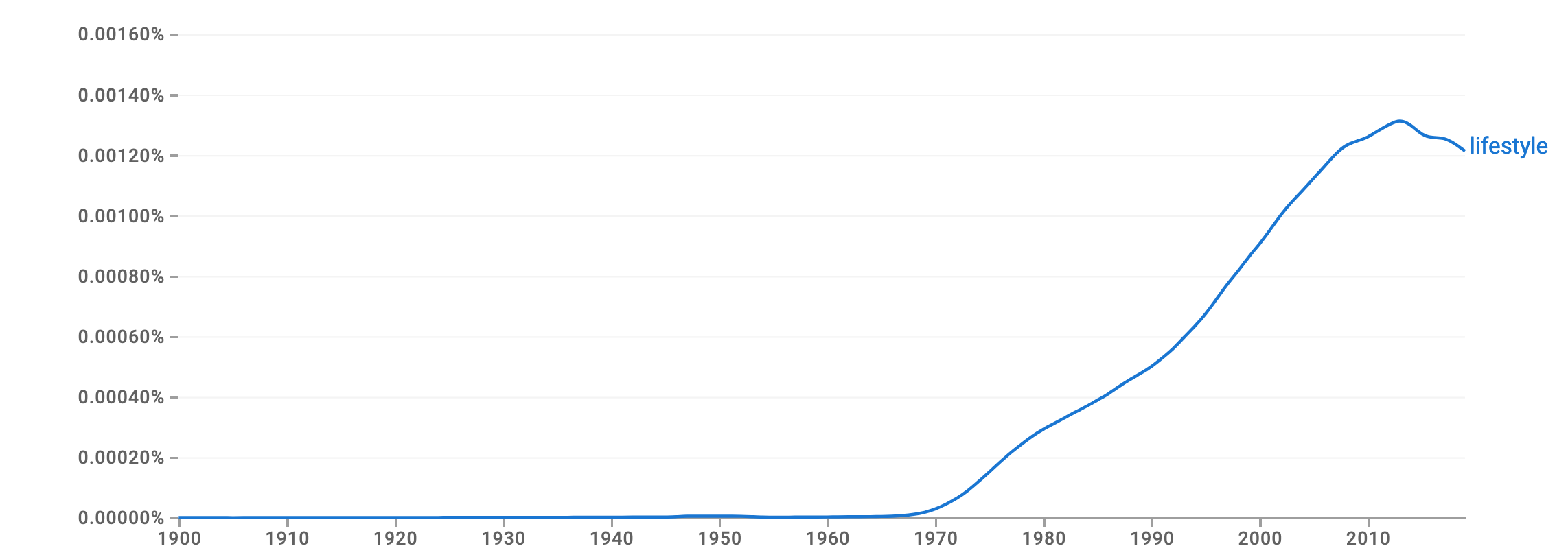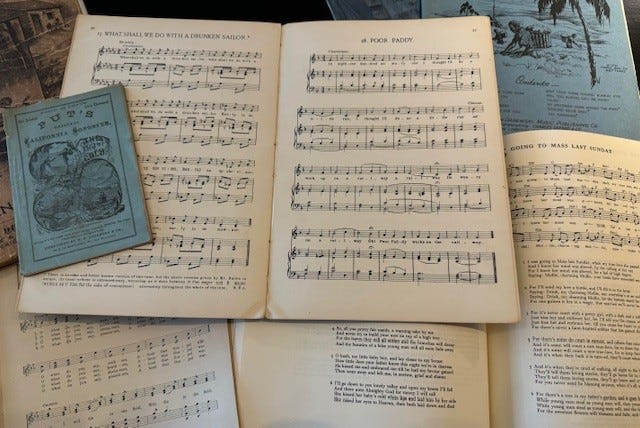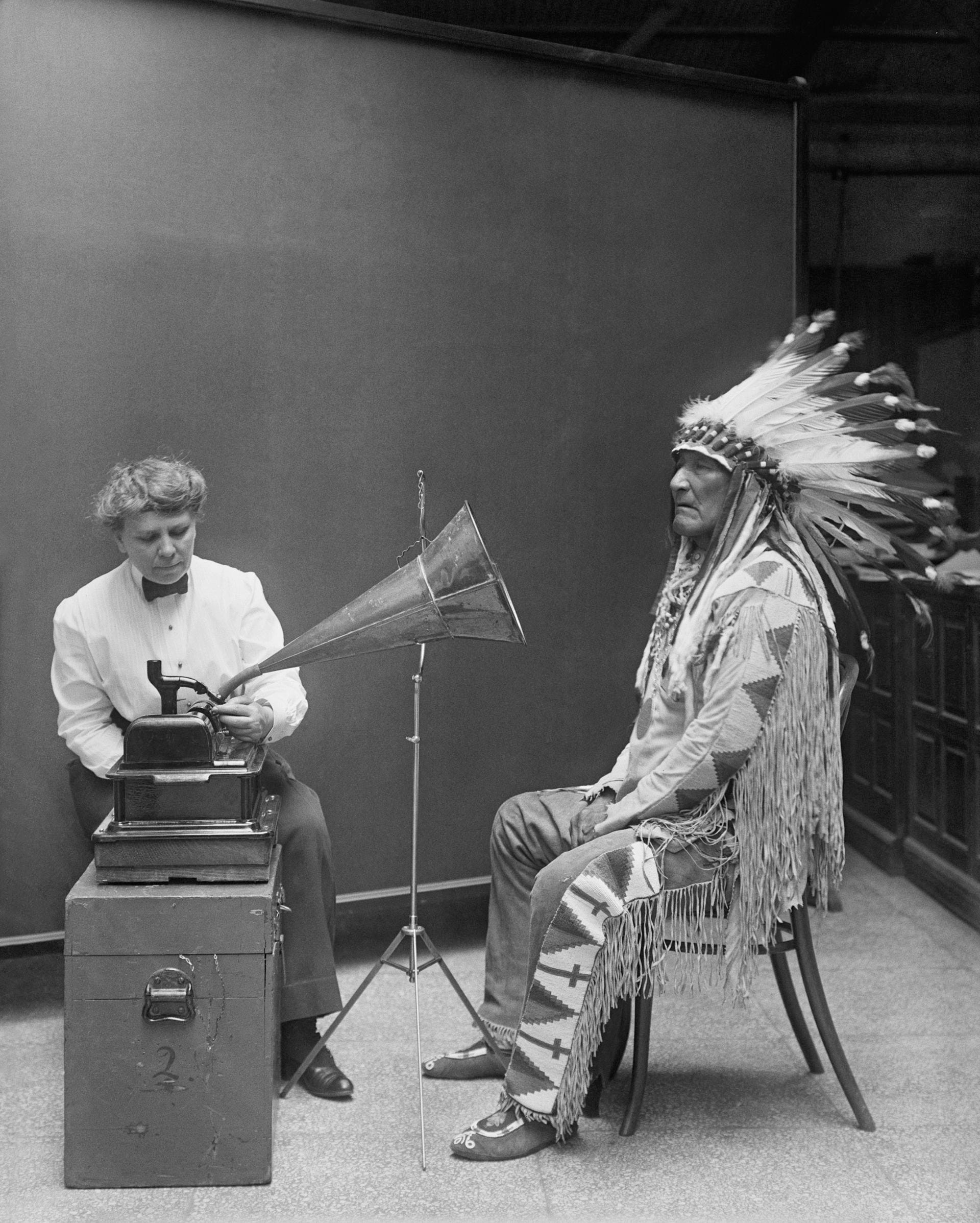As many of you know, I’m publishing my new book on Substack. Below is the latest installment. The book is called Music to Raise the Dead: The Secret Origins of Musicology. Each chapter answers a different question about music—some of them are a little unusual. Today’s question is: Where Do Music Genres Come From? I don’t like to make grand claims, but the section below makes vital points, deeply relevant to problems in the culture today. It draws on decades of research and hands-on experience, and represents a significant expression of my core values, as well as my hopes for the future of our creative culture. . Here are links to the chapters published so far. MUSIC TO RAISE THE DEAD: The Secret Origins of MusicologyTable of ContentsPrologue
If you want to support my work, please take out a premium subscription (just $6 per month).Where Do Music Genres Come From?Music is a lifestyle product. But it wasn’t always that way. A hundred years ago, the word lifestyle didn’t exist—and wouldn’t enter the popular vocabulary until the 1960s. Products and services were sold mostly for leisure, comfort, status, or simply utilitarian purposes, and marketeers didn’t even possess a terminology to discuss lifestyle concepts. That was true of music, and almost everything else available for sale in the marketplace. Consider the revealing fact that, during the entire course of 1967, the Chicago Tribune only used the word lifestyle seven times. But that would soon change. Just five years later the word showed up 3,300 times in the same newspaper. Fast forward to the present day, when media outlets hire “lifestyle editors” who are responsible for much of what gets covered in the news. Everything nowadays is part of a lifestyle. So it’s hard to remember a time when we didn’t view songs through that prism. But some people are still alive who can remember those simpler days. Of course, we can look back on the music of the 1920s, and assign lifestyle categories to it. The record labels themselves, however, had a different way of looking at their products back then. Jazz and blues, for example, were considered race records, targeted at African-American consumers. And white music lovers were segmented in the same way. In that era, labels released recordings for every ethnic group of any significant size—featuring Irish tenors, Cajun fiddlers, Hawaiian guitarist, klezmer clarinetists, Tex-Mex accordionists, and a host of other homegrown styles from immigrant and indigenous communities. Mass-market musical styles also flourished, but the customers for these mainstream recordings were viewed in terms of income, geography, and other straightforward demographic categories. These pigeonholes were useful in their own way, but a far cry from today’s more obsessive lifestyle marketing. Even country music, which might seem the prototype of a lifestyle genre, originated as a regional style—sold to people who actually lived in the country—long before it acquired the complex psychographic and sociopolitical trappings now associated with it. When record label execs talked about selling ‘hillbilly music’ in those days, the term represented the actual customers they had in mind, not some constellation of aspirational and attitudinal markers. Today it’s different. Music genres are ready-made lifestyle categories. Hip-hop is not just a type of song; it’s a way of presenting yourself to the world. Punk is as much a manner of dressing and acting as it is a song style. And the same can be said for most other genres, from EDM to heavy metal. Show me your playlist, and I can already envision how you live. To be brutally honest, a lot of playacting is involved. Most country music fans today will never ride the range or rustle up cattle—maybe they won’t even own a pickup truck. Your hip-hop attitude might just be a pose. But that hardly matters. The beauty of a lifestyle in the current day is that it reflects your desires and fantasies, not your reality. That’s what makes it feel so liberating. It’s a kind of wish fulfillment. I can live in a landlocked nation, and still fantasize with surf music in the background. I can work my 9-to-5 office job during the day, bowing and scraping to the boss, but take on the posture of a defiant punk or metalhead at night. We wouldn’t have it any other way. But we shouldn’t forget how music genres originated. Before songs became lifestyle accessories, they were actually integrated into the fabric of your life. You didn’t choose this soundtrack by changing radio channels or scrolling through playlists. You literally inherited a rich musical tapestry at birth, and drew on all its resources as needed. You might even say the music chose you, rather than you chose it. In those days, almost every song had its special setting or purpose, and it wasn’t one you got to decide. No DJ picked which songs got played at your wedding—tradition already dictated it. The same was true of funerals, or dances, or seasonal rituals, or religious services, or almost any other context where music was performed. Songs were embedded into the settings and rhythms of your life in a way we can hardly comprehend today. To get some sense of this, just page through collections of traditional songs and consider how different these are from your handpicked playlists. The first thing you notice is that there are no superstars or popular artists—in many instances, no composer is even named. Everybody in the community shared in ownership of these songs. The idea that one person could possess them would have been incomprehensible to those who relied on this music, and integrated it into their lives. That may seem scandalous—isn’t somebody getting robbed of royalties?—but there was a positive side to this anonymity. Songs were a shared resource, and the intense stratification of the current music business, where a few rich people own the music while everyone else just listens to it, didn’t exist in these more participatory contexts. We’ve replaced that with endless legal battles over song copyrights, and entire careers now rise and fall on intellectual property laws. Can you imagine a society where no one worried about such things? Our ancestors would have laughed at a system (like ours) which actively prevents people from using songs. Wasn’t the very purpose of a song to be sung? And, supposing you could identify the composers, wouldn’t they want their songs incorporated into the rituals and festivities of the community? Make no mistake: many of these cultures understood the concept of personal property quite well—they just didn’t view songs in that way. Yes, royalties were lost. And we gained something as a society when composers got credit (and remuneration) for their music. But we’ve now pushed far beyond that. Most songs today are owned by corporations, and managed by lawyers and accountants. The pendulum has perhaps tilted too far. Many of these traditional songs don’t even have titles. The researchers who gathered and notated them could only label them by function or context—calling them “healing song” or “hunting song” or “lullaby” or “game song” or some similar designation. For example, when Frances Densmore published her 1913 collection of Chippewa music, here are some of the song “titles” she used:
Or consider these songs Densmore collected for her 1929 study Papago Music:
Music is now considered part of the entertainment industry. And, of course, traditional societies obviously understood that songs can provide diversion and enjoyment. But, as these lists make clear, music served many other purposes as well. Our own musical culture, by comparison, is a paltry thing. Just imagine the power of a song that can make someone invisible, or put an eagle to sleep, or restore life to the dead. We can’t even begin to comprehend a musical culture with this kind of confidence or depth. It’s sobering to consider that our current music business has defined more than a thousand music genres, but they still lack most of the categories on Densmore’s list. I can’t avoid concluding that, in some degree, our musical lives have narrowed even as millions of recordings are made instantly available through the magic of digital technology. And this degradation has happened for an obvious reason: songs have proliferated as lifestyle accessories, but have lost their multifaceted integration into our shared communal existence. The music celebrated in this book, which conducts a protagonist (= you and me) through milestone moments of life—and death—is closely linked to this more textured way of viewing music genres. And the participatory concept of heroism presented here eradicates the stultifying hierarchies of song economics, in which music stars live in their distant constellations while the rest of us are mere underlings, buying the tickets and footing the bills—but always marked as a customer in a commercial transaction. As we saw back with the Derveni papyrus in chapter one, an extraordinary breakthrough took place in human society when the concept of heroism was expanded beyond gods and rulers and made accessible to others of lowlier origins. And music made this possible. The process has now reversed with musical culture becoming, if anything, even more stratified than back in the days of pharaohs and emperors. Historians rarely give music the credit it deserves as a force in the expansion of human rights. But its role in advancing and securing personal autonomy has always been recognized by authorities—which is why rulers taken such great care in censoring and controlling songs. This is why the first songs of personal emotion and romantic love flourished in the same community, Deir el-Medina in ancient Egypt, which also mounted the first successful labor strike. This is why the gay rights movement in modern America gained so much momentum at Stonewall, a music club where patrons were denied the right to dance. This is why the Vietnam protests are so closely associated with special songs. And the same is true of almost every other large-scale protest you can name. From the "La Marseillaise" of the French Revolution to “The Internationale” of various socialist, anarchist, communist activists to the Hong Kong liberation anthems of those who oppose communism today—in every instance, songs lead the charge. This is the covenant offered by genuine hero’s music: It doesn’t promise triumph, rather it shows a path. The journey may be difficult, but that’s also part of the tradition. If it were easy, you wouldn’t deserve the title of hero. At the root of every contemporary music genre, these richer possibilities still exist. You can even detect all the essential elements of the heroic songs of the distant past inside the tightly-defined genre lifestyles of today’s entertainment industry. You just need to know where to look:
(It’s no coincidence that the Grand Ole Opry in Nashville had a longstanding prohibition of drums—this simply continued a practice associated with country lifestyles dating back to the earliest herding communities.) A host of other song styles originated as guides and touchstones for our life’s journey—from the first lullabies we hear as an infant to the musical laments that accompany our final rites. They play the identical role today that they did thousands of years ago. And the same is true of love songs, spiritual songs, and a host of other genres and styles. Even in a high tech digital age of streaming and curated playlists, this other, richer musical culture still exists, with its almost magical capacity to enter into the very fabric of our lives. But this potentiality is often forgotten or hidden from view today. We forget that the love song can play a role in our own romances—and wrongly assume it’s just some make-believe story set to music. As Gershwin warned: They’re singing songs of love, but not for me. The earliest attempts to classify music into categories focused, almost to an obsessive degree, on this relationship between the individual and society. When Plato critiques different musical modes and styles in The Republic he castigates the Lydian mode for weakening character with its sorrowful sounds. The Ionian mode, he claims, is suitable for drunkards. But the Dorian and Phrygian modes are praised because they “sound the note or accent which a brave man utters in the hour of danger and stern resolve.” This is the proper music, we are told, when a hero faces the greatest of obstacles—or even stares death in the face. Here again, this way of viewing songs seems strange to a modern-day listener, who would never think of classifying music in such a peculiar way. Just try finding a Spotify genre for staring down the grim reaper! After the rise of Christianity, this obsessive categorization of songs continued along similar lines for hundreds of years. But there was one new ingredient here, the concept of sinfulness, which hadn’t concerned the ancients, who were more focused on practical issues related to how songs impacted character and behavior. Even so, Pagans and Christians (as well as adherents of other religions) agreed on the main point: Musical notes and harmonies themselves were potent forces, and needed to be classified on the basis of their dangerous or awe-inspiring capacities. Put simply, genres originated to describe not what a song was, but what it did. This changed with the emergence of the music business, which made money from selling songs, not transforming people’s lives. But it changed slowly, and with much reluctance on the part of music lovers who still believed in the larger potency of songs. Consider the much different way of classifying songs adopted by Samuel Pepys, who collected printed ballads and broadsides in the late 1600s. Here were his categories:
Scholars have found this categorization confusing, and it certainly is from a number of standpoints. Some of the labels are based on the topic of the song, but others (drinking, devotion, etc.) describe instead a purpose. Of course, this makes sense if we grasp that two musical traditions are coexisting here—one that guides the recipient through different real-life situations, and another that merely entertains. In other words, Pepys’s list captures the exact midpoint in the history of music genres. At this stage, some songs still do things. Other songs—anticipating our own time—merely describe situations, or adorn what we would now call a lifestyle. This also explains the bizarre separation of songs about romance into four separate categories. Why does Pepys put songs about pleasant love into a different ‘genre’ than songs about unfortunate love? And, for heaven’s sake, why are marriage songs kept out of the other ‘love’ categories? But, again, this is more understandable if we consider that people actually applied these songs to the specific conditions of their love life—perhaps as a source of advice and guidance (which, as we have seen, was a time-honored role for music). Sad lovers have very different needs than happy ones. So the songs must be kept apart. In Pepys’s day, it made perfect sense that someone relying on songs for courtship or seduction would need very different music from an unhappy lover lamenting a broken heart, or a married couple. For this same reason, Pepys differentiated between two kinds of historical songs, one true and the other fabulous—because this distinction made clear which music was preserving the facts of an actual event (also a venerable tradition among bards) and which songs merely entertained with a fanciful story. We’ve lost that distinction today. Even in the 21st century, romantic music retains hints of these larger capacities. Deep in our subconscious, we expect these songs to do more than just sing about love. We believe—or, at least, hope—that these love songs, despite Gershwin’s declaration to the contrary, really are for me. We hope that they will actually advance our lover’s cause, conducting us on the hero’s path to romance. When sociologist Tia DeNora interviewed women about the music they use in romantic encounters—for example a dinner date at their apartment—she found a widespread belief that the songs had a genuine influence on these intimate moments. “It’s a kind of magical, mystical type thing,” explained one informant. But that’s always been the case with the music of any quest. The songs possess magical power—although nowadays it’s only allowed to work its wonders in the bedroom. And that’s only because of the persistence of some listeners—the music industry is ignorant of this kind of genre distinction. The moguls who run record labels and streaming platforms measure music on the money it generates, not the lives it changes. And how could they even begin to quantify and tabulate the transformative moments songs generate? Those will never show up on a corporate income statement or balance sheet. But don’t minimize their importance just because heroic interventions can’t be reduced to dollars and cents. This is why our notions of music genres today are so diminished, even as the number of genres have multiplied. These categories now exist merely as descriptive labels, where they once operated as catalysts and sources of enchantment. They inspired the warrior with bravery, healed the sick, made difficult work more tolerable, preserved history and important lore, instructed and edified, intervened with divine powers, created altered mind states, intensified rituals, guided individuals through milestone moments, and not only brought lovers together but even cast a spell or charm over their couplings. These potentialities still exist in our music, but mostly as latent possibilities that few know how to activate. But they haven’t disappeared, even if the prevailing discourse on music pretends they don’t exist. In previous chapters, we’ve seen how the concept of heroism got debased—once it was part of a plan for our own lives, but got turned into a kind of play-acting on the screen. We now see that the categorization of music genres has evolved along the same path. When music became an entertainment product and lifestyle accessory, so many other possibilities in our musical culture got forgotten. Music that once aspired to heroic heights was reduced to a moment of diversion in a busy day, or a kind of posturing of the life we wish we were leading, but now only dream about while listening to a playlist. We have now traversed the full extent of this history from the Orphic journeys to the Underworld of antiquity to the entertainment industry substitutes that define pop culture today. Before concluding this book, we need to inquire whether music can ever recapture its heroic capacities in any meaningful degree. But first, let’s summarize what we’ve learned in this chapter. (1) Traditional ways of categorizing music took for granted that songs possess a capacity to change lives—indeed, this was the reason why philosophers and authorities argued so much about music. They hoped to channel this power in positive ways, and minimize or prohibit its negative uses. (2) This approach to classifying music persisted for centuries, and was only replaced by our descriptive genre labels after the rise of the music business. (3) In the aftermath of the 1960s, music genres morphed into rigid lifestyle categories. This was part of a broader shift to lifestyle marketing in almost every category of consumer product, but music was especially well suited for this new approach because many listeners relied on songs to define their lifestyle. (4) Although this new way of categorizing music brought many benefits, much was lost in the process. Music now serves as a platform for wish-fulfillment—but this has been accompanied by a commensurate diminution in a more integrated approach in which songs not only symbolize a life ‘style’, but are integrated into a rich, contextualized life. (5) In the aftermath, a kind of playacting replaces the more deeply interwoven aspects of music culture. Genres get locked into a fantasy life instead of enriching real life—in other words, they struggle to rise above what we call escapism. This posturing is endearing in its own way and not without psychological value. But when it replaces more transformative and holistic ways of living musically it is enervating and stultifying. (6) At first glance, this shift is hard to perceive, because the number of music genres has grown enormously—implying that the overall ecosystem is healthy and flourishing. By one measure, there are now more than 5,000 music genre categories. How can genres lose vitality if their numbers are increasing so much? But this expansion of marketing niches cannot compensate for a weakening of transformative power. (7) But even in the current day, the capacities of songs to transform and enchant exist latent within the commercial categories. These powers may have been mostly forgotten, but they have not yet disappeared. Those who discover how to tap into them can be said to have reversed the power structure in the music ecosystem—transcending the stasis of genres as imposed lifestyle marketing. Coming soon: The final installment of Music to Raise the Dead—the closing chapter: “Can Music Still Do All This Today?” Footnotes: Show me your playlist: For a more complete history of the word lifestyle and its emergence as a way to define music genres, see Ted Gioia, The Birth (and Death) of the Cool (Golden, Colorado: Fulcrum, 2009), pp. 26-43. 1913 collection of Chippewa music: Frances Densmore, Chippewa Music II (Washington, D.C.: Smithsonian, 1913). her 1929 study Papago Music: Frances Densmore, Papago Music (Washington, D.C.: Smithsonian, 1929). Ionian mode, he claims, is suitable for drunkards: Plato, The Republic, translated by Benjamin Jowett (Oxford: Clarendon, 1925), p. 84. way of classifying songs adopted by Samuel Pepys: Helen Weinstein, editor, Catalogue of the Pepys Library at Magdalene College Cambridge, Vol. II Ballads (Suffolk, U.K.: D.S. Brewer, 1994), p. xvii. When sociologists Tia DeNora: Tia DeNora, Music in Everyday Life, (Cambridge: Cambridge University Press, 2000), p. 116. You're currently a free subscriber to The Honest Broker. For the full experience, upgrade your subscription. |
Search thousands of free JavaScript snippets that you can quickly copy and paste into your web pages. Get free JavaScript tutorials, references, code, menus, calendars, popup windows, games, and much more.
Where Do Music Genres Come From?
Subscribe to:
Post Comments (Atom)
Top 3 UX Design Articles of 2024 to Remember
Based on most subscriptions ͏ ͏ ͏ ͏ ͏ ͏ ͏ ͏ ͏ ͏ ͏ ͏ ͏ ͏ ͏ ͏ ...
-
code.gs // 1. Enter sheet name where data is to be written below var SHEET_NAME = "Sheet1" ; // 2. Run > setup // // 3....




No comments:
Post a Comment